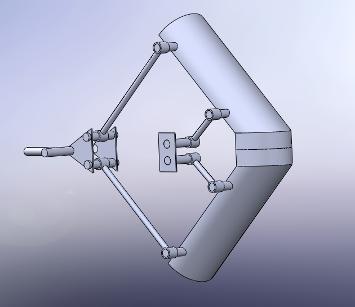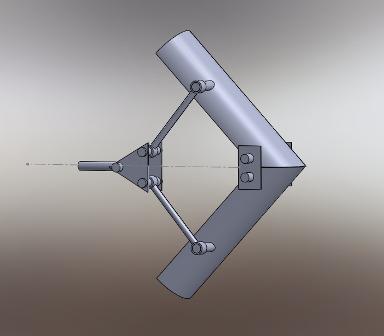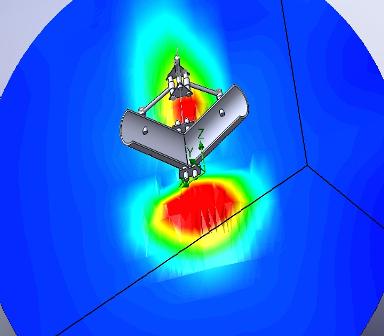|
Northern Arizona University |

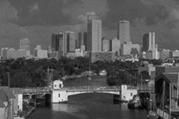
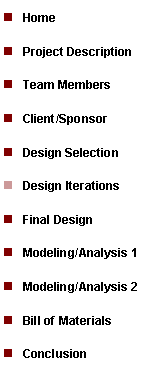

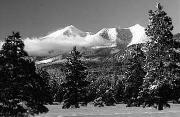

|
Design Iterations |
|
In order for the team to design the best clamshell thrust reverser that would meet the client’s needs, a few design iterations had to be done. For each design iteration changes in linkage, connections, and bucket dimensions were made. Analysis was performed using FloWorks on each design to get a better understanding of what the flow looked like against the thrust reverser. After three design iterations, a final design was made.
Design 1 Our first design consisted of a linkage mechanism that would stow the two halves of the thrust reverser on the top and bottom of the jet engine. The design consisted of four linkage members that would position the reverser behind the jet engine.
First Design of Clamshell Thrust Reverser
A CFD analysis for the first design iteration of the thrust reverser was done using FloWorks to determine how much thrust was being redirected. It was discovered that most of the thrust was not being redirected in desired direction. Further investigation showed that a high pressure zone was occurring at the center of the reverser. This high pressure zone was creating a pressure bubble that caused most of the thrust from the engine to go around the reverser instead of redirecting the thrust forward. The red area represents high velocity flow and blue represents low speed flow, exists behind the reverser. Due to the escape of thrust, this design was not chosen and was modified.
FloWorks Analysis of First Design Iteration of Clamshell Thrust Reverser
Design 2 The flat plats where the reverser came together were eliminated for the second design iteration. The linkage that stows and deploys the thrust reverser was also simplified. The two linkage arms on the aft part of the reverser were eliminated and replaced with a pivot point. These linkage arms were eliminated to reduce weight and simplify the design.
Second Design Iteration of Clamshell Thrust Reverser
Using FloWorks to perform a CFD computation on the new design it was discovered that the thrust was still escaping from the reverser and not being redirected in the desired direction. The high pressure zone was still creating a pressure bubble that caused the thrust to go around the reverser. The red area, which is high velocity flow, shows the thrust escaping the reverser. Since the thrust was still escaping the reverser, a third design iteration was needed. The third design iteration led to our final design.
FloWorks Analysis of First Design Iteration of Clamshell Thrust Reverser |
